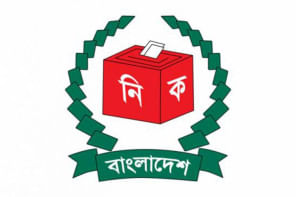Gramophone's Gauhar Jaan

Gauhar Jaan was a songstress of Hindustani music who came into limelight in the last decade of 19th century and dominated the first two decades of 20th century with her repertoire of musical talents, enchanting music lovers and patrons that consisted of nouveu riche and the Nawabs and Maharajas of India. Patronage of music and 'Baijis' courtesans/fancy girls were an inseparable part of their culture. Gauhar Jaan was benefited by the patronage of this class.
Gauhar Jaan was endowed with a well-groomed melodious voice and exceptional beauty and had a natural gift of expressing, with befitting ease, highly charged lyrics of the song and the complex musical syntax. Gauhar Jaan received lessons in Kathak dance and Thumri from highly regarded Bindadin Maharaj (1836-1917). Krishnachandra Das taught her Bengali Kirtan, from Srijanbai she learnt Dhrupad, which was essential for singers of Kheyal and Thumri. From her mother she learnt Urdu and Farsi.
Gauhar Jaan and her mother were of Anglo-Indian parentage. Her mother, Victoria Hemmings Bicki married a young Armenian engineer, Robert Yeoward of Allahabad. A daughter Elin Angelina Yeoward was born at Azamgarh, Agra. The marriage did not last and ended in divorce in 1879.
Bicki left Azamgarh along with her mother and daughter and shifted to Benares in 1879. There she and her daughter embraced Islam. Her mother became Bari Malka Jaan and her daughter became Gauhar Jaan. The title Jaan was for those 'Tawayefs' (fancy woman) whose trade dwelt on songs and singing only.
In 1883, they shifted to Calcutta and took residence in three small rooms of 49 Chitpur Road. Gauhar's first public performance was at the court of Raja of Darbhanga. The young lady won over the hearts of the personages present with her splendid performance. She was made the court musician of the Maharaja. Before 19th century was to come to an end, Gauhar Jaan was the shining star among the songstresses of the time. She excelled with great command in all branches of Hindustani music, Bengali songs, and even Rabindrasangeet.
But the coming 20th century was holding a golden era for Gauhar Jaan. Emil Berliner, a young man from Germany succeeded in developing the first zinc Gramophone record in 1891. Following that a company was incorporated in London -GTL's Fred Gaisberg arrived in Calcutta on 27 October 1902. He was taken to the exclusive function of a Bengali Babu. He could guess from the beginning that the artiste of the evening is not going to be a run of the mill nautch girl. She was tastefully dressed and her ornaments added to her grandeur. To him she was exceptionally attractive, fair, possessing a graceful figure. She was Gauhar Jaan.
Her song was recorded on 11th November 1902. She asked of Mr Gaisberg pointing at a funnel shaped cylinder whether she was to sing into it. Yes! Indeed! And she cannot move a bit and has to sing as loudly as possible and that she would have only three minutes for it! Gaisberg understood that this lady was to be the first Gramophone celebrity of India.
At the beginning, each record ended with a short message 'My name is Gauhar Jaan' presented in the girlishly sweet but immaculate English accent of Gauhar Jaan. From 1902 to 1920, in her colourful singing career, nearly 600 songs of Gauhar Jaan were recorded and marketed. The songs were in 20 languages. Although Thumri was her forte, she excelled in all branches of Hindustani music. Her most famous songs are, thumri sung in Bhairavi, nahak laye gavanavamora, jabse gaye mori sud huna live, Ras ke bhare Tore Nain, Mere dard-e-jigar and Bhajans like, Radhey Krishna Bol Mukhse, Bhalobasibe bole bhalobashine (Bengali) and many more. She also sang the Rabindra Sangeet Keno choker jole bhi jiye dilem na pather shukno dhulo joto.
In December 1911, she was invited to perform at the coronation of King George V at Delhi Durbar, where she sang a duet, Ye Hai Tajposhi Ka Jalsa, Mubarak Ho Mubarak Ho, with Jankibai of Allahabad.
Later she lost her mother. Misfortune started following her one after another, devastating her with calumny and vengeful and fabricated litigations filed by a beneficiary of her mother, and later by one on whom she learnt to depend. In these two litigations of enlisting the services of renowned lawyers of the country her fortune sank to the bottom.
She was in dire straits and took a job of court musician of the Maharaja of Mysore for a mere a pittance of 500.00 taka per month. She was deeply depressed. Her health started declining and she died on January 17, 1930.

 For all latest news, follow The Daily Star's Google News channel.
For all latest news, follow The Daily Star's Google News channel. 



Comments